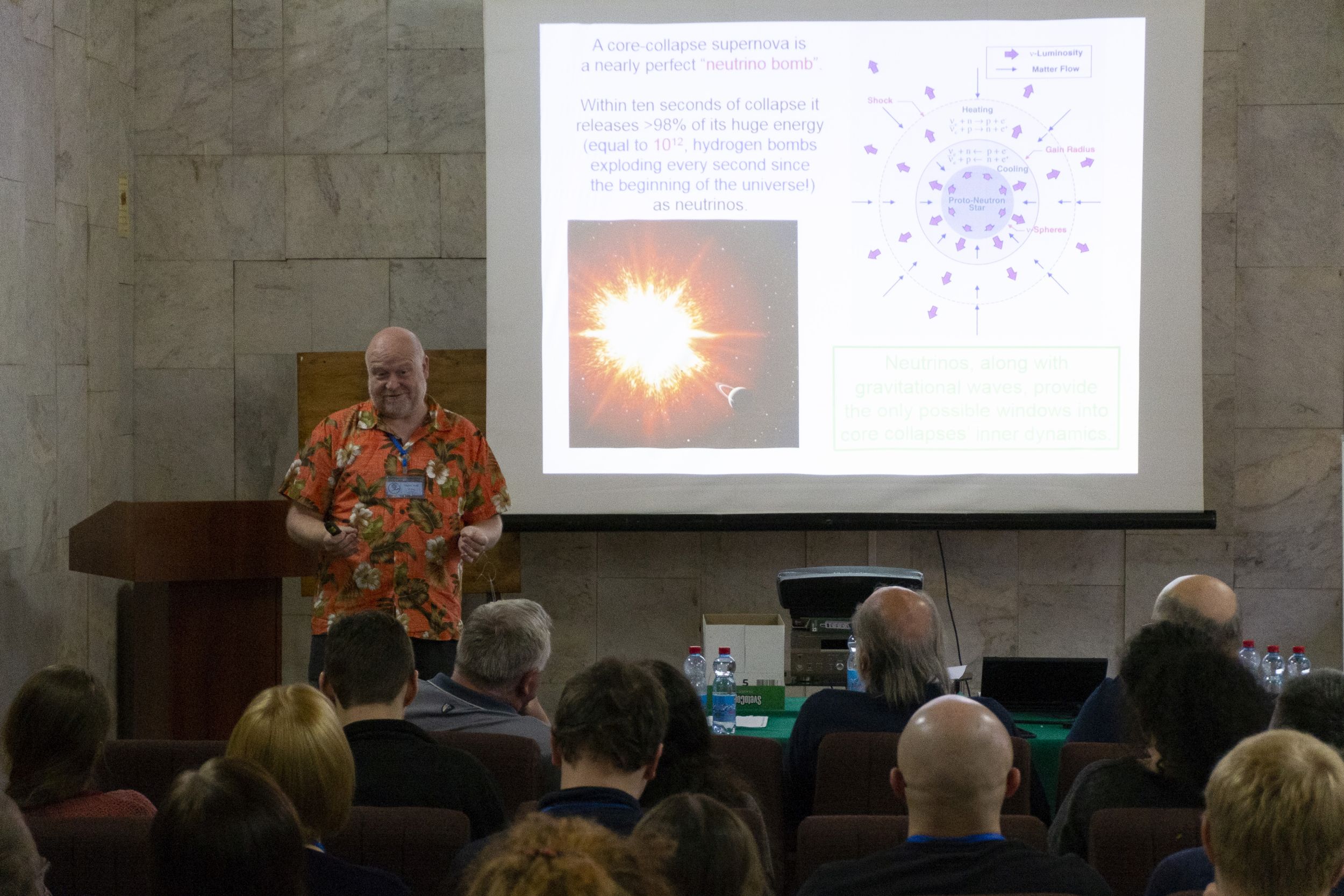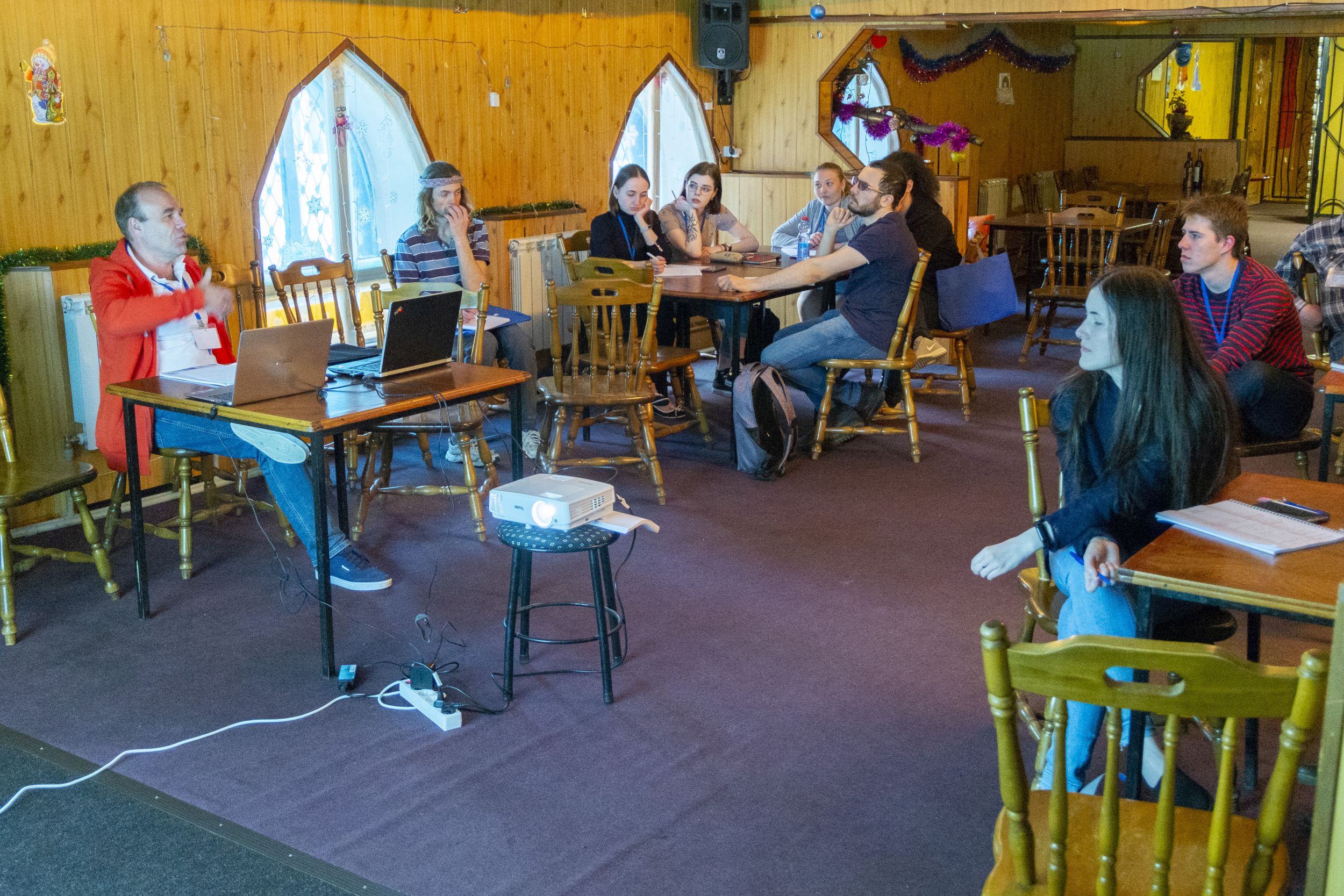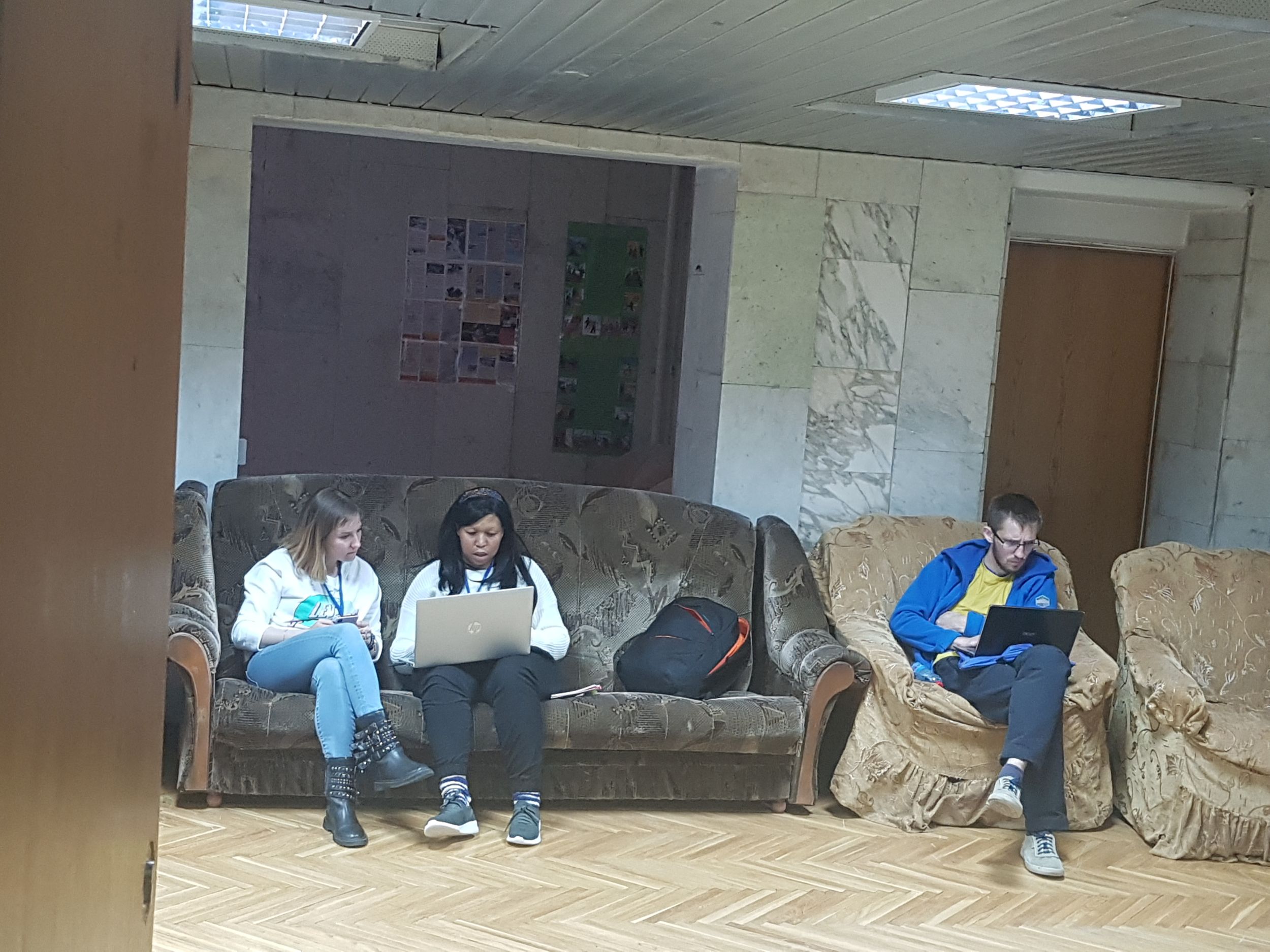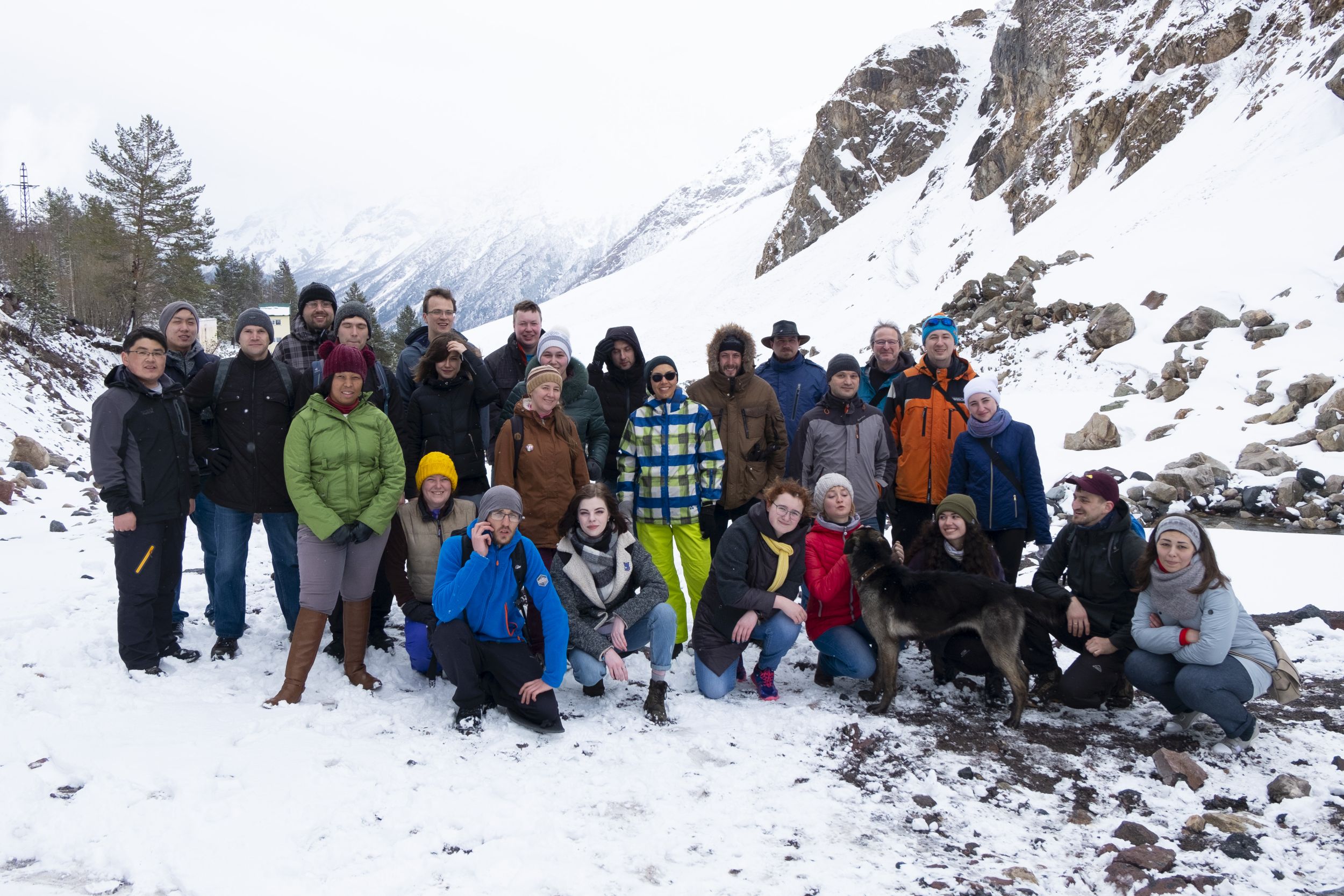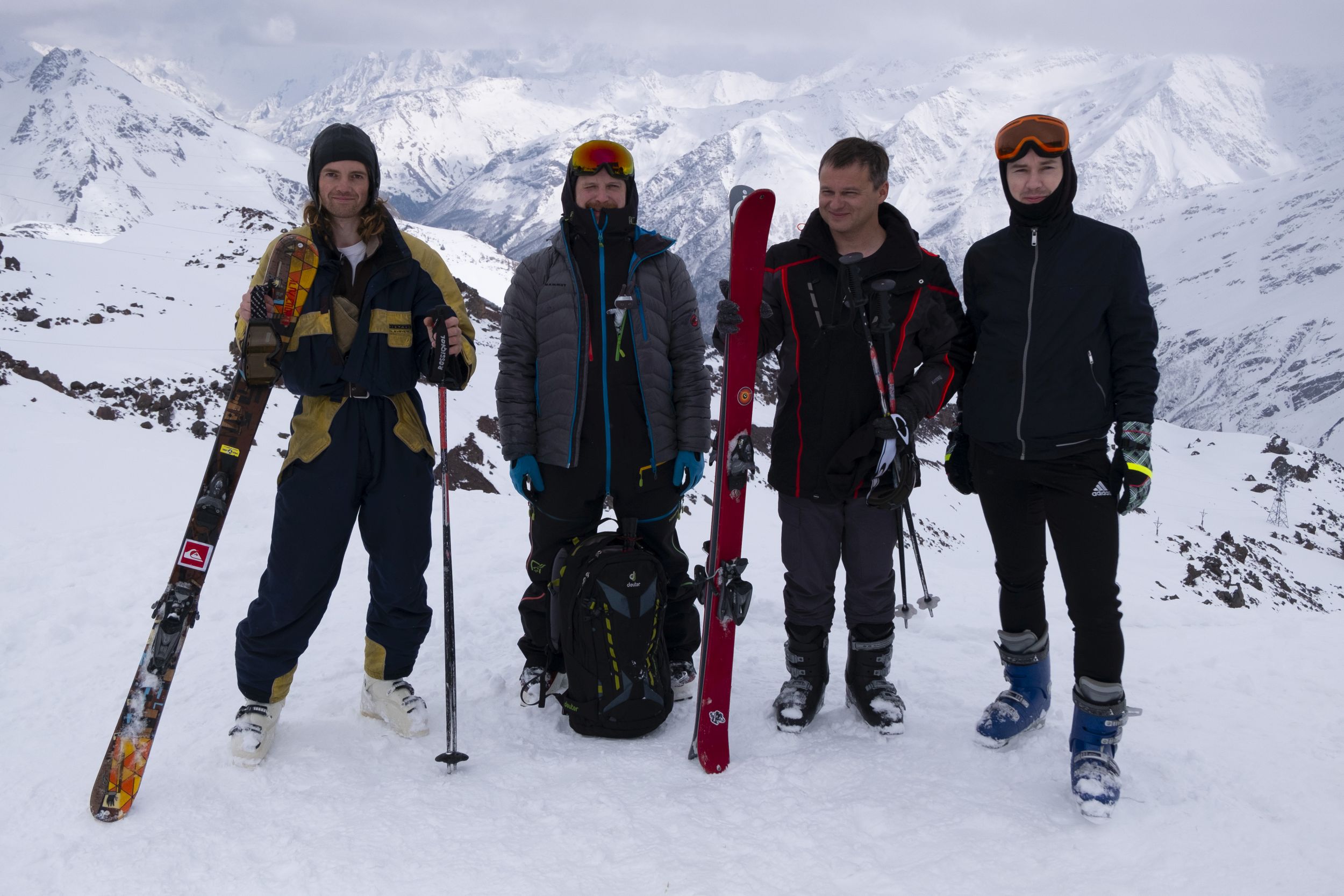Series of Baksan Schools revived
News, 23 April 2019

Moscow, 23 April 2019
Institute for Nuclear Research RAS
Joint Institute for Nuclear Research
Press release
Series of Baksan International Schools “Particles and Cosmology” revived
On the slopes of Mount Elbrus, the 16th International Baksan School on Astroparticle Physics was held, organized jointly by the Institute for Nuclear Research (INR) of RAS and the Joint Institute for Nuclear Research (JINR) with the participation of the Astroparticle Physics European Consortium (APPEC) and the Russian Foundation for Basic Research (RFBR). After a 15-year break, the world-famous series of schools held near the Baksan Neutrino Observatory of the INR RAS was revived.
On 10 – 18 April 2019, this International School for postgraduates, diploma students, and young scientists specializing in the interdisciplinary fields at the junction of particle physics and astronomy, i.e. astroparticle physics, was held near the Baksan Neutrino Observatory (BNO) located at the foot of Mount Elbrus. Previous schools of the series “Particles and Cosmology” were held every two years. However, this tradition was broken at the beginning of the 2000s. This year, the School was held after a 15-year hiatus, and the revival of the series became a significant event for both the Baksan Neutrino Observatory and Russian astroparticle physics at large.
 Participant of the School Daniil Krichevsky presenting his report
Participant of the School Daniil Krichevsky presenting his report
The format of the renewed School has changed greatly: now, it is aimed at the deep study of particular scientific fields that will be changed every two years. Invited scientists, all world-leading specialists, presented three lecture courses (“Neutrino detecting methods” by Alain Blondel from the Geneva University, Switzerland; “Machine learning in astroparticle physics” by Oleg Kalashev from INR RAS, Moscow; “Multi-messenger astrophysics” by Michael Kachelries from the Trondheim University, Norway). Each course included six lectures and was accompanied by separate discussion sessions and practical training. Furthermore, the programme of the School included four separate lectures on topical issues of astroparticle physics also delivered by leading specialists.
Seminars on multi-messenger astrophysics in two groups (in the conference room and in the bar)
“The main event of the School for me was a visit to the Baksan Neutrino Observatory,” Mark Vagins, Professor of the University of California, Irvine (the USA) and the Kavli Institute for the Physics and Mathematics of the Universe (the Tokyo University, Japan), who gave the lecture “Astrophysics of MeV neutrino”. The excursion to the experimental facilities of the Observatory was preceded by a special session at which leading scientists of the Observatory told visitors about the scientific programme of BNO. During the excursion, participants and teachers of the School became acquainted with the world-known underground scintillation telescope that registered a neutrino signal in 1987 caused by a flash at the supernova in the Large Magellanic Cloud. The visitors also saw new, actively developing experiments such as the gallium facility BEST for the search for sterile neutrinos, the gamma-observatory Carpet-3, and many others. According to Vagins, the 9-day trip to the Baksan School was the longest one for him in the last 25 years. Work on the large neutrino experiment Super-Kamiokande rarely allows for being away, even for several days. However, all these days were filled with fascinating discussions with participants of the School, and the professor noted their unbelievably high scientific level.
 Excursion to the underground laboratories of the Baksan neutrino Observatory
Excursion to the underground laboratories of the Baksan neutrino Observatory
Among the participants of the School, there were 58 postgraduates, senior students and young scientists from 9 countries of three parts of the world. Many listeners made reports on their research. Participants of the School noted a very high level of such reports; many of them were delivered with a high oratorical prowess. Participation of European students became possible thanks to APPEC support; many Russian listeners were supported by JINR and the INR RAS, and the RFBR grant gave an opportunity to cover the business trip expenses of invited lecturers. “At the School, I saw a well-balanced composition of the deepened theoretical basis, the modern state of science and the view on future astrophysical experiments, and all this was presented by great lecturers. A large number of fairly good questions asked by participants, and their vivid interaction confirm the great success of the School that should definitely be held again in the same format,” as quoted by Thomas Berghöfer (DESY, Germany), who is engaged in international contacts in APPEC. He also delivered the lecture “Extremely low light level detectors”.
Mountain walks and skiing on Elbrus
Contacts:
Dmitry V. Naumov, Deputy Director of the DLNP JINR (dnaumov@jinr.ru),
Grigory I. Rubtsov, Deputy Director of the INR RAS (grisha@inr.ac.ru, +7 (903) 755-17-32),
Sergey V. Troitsky, Chief Reseacher of the INR RAS (st@ms2.inr.ac.ru).
Web site of the School: http://www.inr.ac.ru/~school.
Photos by A. Yudin, G. Rubtsov.
Original photos are available via the link: https://yadi.sk/d/LvyRK7gbwycu8A.
